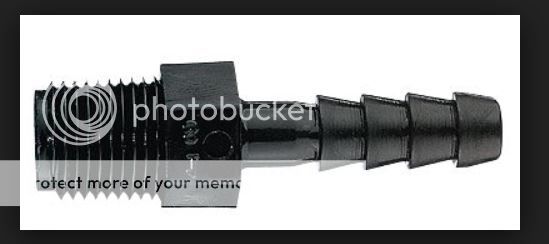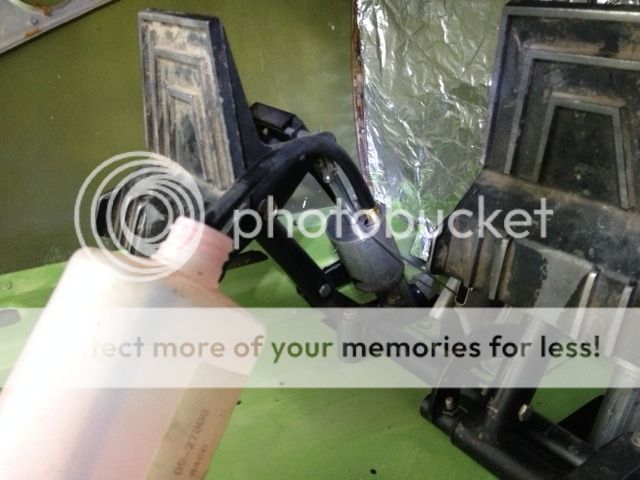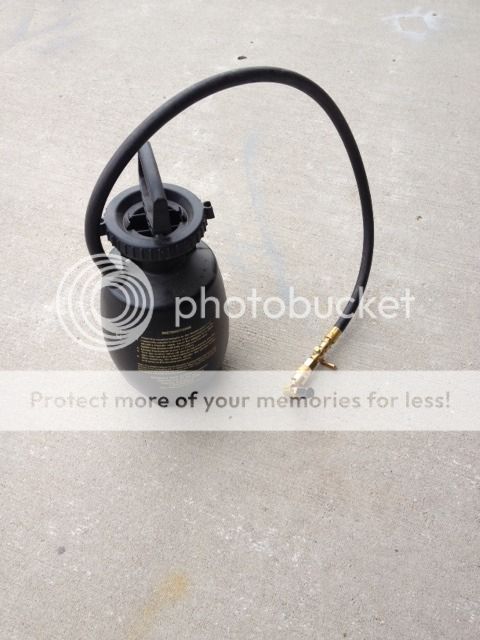The following is a good procedure.
Bleeding Your
Cherokee Brakes
For as long as I can
remember, bleeding the
brakes on the Cherokee
family of aircraft (which applies
all the PA-28, PA-32 and PA-
34 models) has been a problem.
For years I have also listened to
many mechanics and owners
suggest different approaches
that they have taken to bleed the
brakes and all with a limited
amount of success. After years
of fighting spongy brakes, I felt
there had to be a better way.
The procedure that I use
may not be original, but I have
used it for more than 45 years,
and it has worked for me every
time without a great deal of
trouble or expense.
Before we get involved
with the actual process, I would
highly recommend that all the
brake hoses from the parking
brake to the master cylinders to
the actual brake calipers be
inspected very closely. I have
seen many old hoses actually
swell when brake pressure is
being applied due to just being
old. If the hoses are more than
eight years old or have more than
1,000 hours on them, replace
by Dick Russ
them. Brakes are the best
insurance you can have. If you
were to taxi into another plane on
or off the runway due to a
ruptured or leaking hose, the
insurance company might have a
good case for not paying up since
the factory recommends
replacement every eight years or
1,000 hours. But then that's
another story.
In the way of tools and
equipment, you will need a
quarter-inch box-end wrench (it
would be best to have two
quarter-inch box wrenches, one
for each brake caliper, to make
the brake bleeding process
eaSIer.
NOTE: I have found it very
helpful to reduce the thickness
ofthe box end of the wrench by
grinding it to where the wrench
is not as thick which will allow
the tubing to have more area to
fit over the bleed port.
May 2008
Even though the reservoir may
appear full, continue to check the
reservoir fluid level throughout
the bleeding process. You don't
want to the reservoir to run low
on fluid which will make you have
to start over again.
It's helpful to have an
assistant in the plane during the
brake bleeding process, but it
isn't essential, just helpful.
Loosen the bleed port
fitting and start pumping the
brakes. Continue the pumping
action and observe the hydraulic
fluid flowing in the clear tubing.
Check the reservoir to make sure
you have the reservoir toped off
with fluid. Once the tubing is full
of5606, you won't have to worry
about the reservoir fluid level.
Continue to pump the foot brakes
as well as the parking brake,
observing the flow of hydraulic
fluid until you no longer see any
air bubbles flowing inside the
tubing.
Continue pumping the
You will need 25 feet of
clear 3/16-inch inside diameter
plastic tubing (TYGON). You will
need 50 feet of tubing if you do
both sides simultaneously. Tygon
tubing can normally be found in
the plumbing department of most
hardware stores; it's not very
expensive. Other items you will
need include duct or masking
tape, and .032 safety wire.
You will also need at least
one quart of Mil-H-5606
hydraulic fluid. Mil-H-5606 is
normally available at most FBO's
or from some A&P mechanics. It
may also be purchased from
Aircraft Spruce in gallon
quantities. If you do not have any
on hand, I would suggest at least
two quarts, especially if you have
replaced hoses or overhauled
components of your hydraulic
system. If you have just installed
new o-rings in the calipers or are
just bleeding the brakes then one
quart should be enough. On the
other hand, it's always a good
idea to just have some Mil-H-
5606 around since it is also used
in the landing gear as well.
Now that you are ready to
get started, open the left engine
cowl or remove the top cowl for
access to the brake fluid reservoir
which is mounted on the left side
of the firewall.
Cut the plastic tubing into
two 25-foot sections (one if you
bought 50 feet). Place one of the
quarter-inch box wrenches on the
bleed port fitting which is located
on the lower side of the brake
caliper (right or left brake). Slide
one end of the plastic tubing over
the end ofthe brake bleeder port
fitting. Wrap a small coil of safety
wire around the end of the tubing
to secure it to the brake caliper
bleed port like a clamp.
Using a tie-wrap or
masking tape, secure the tubing
to the existing brake hose or
landing gear strut to make sure
the plastic tubing will not pull it
loose from the caliper bleed
port. Run the tubing up and
over the leading edge of the
wing. Continue with the tubing
taking it up and over the top of
the cabin. Secure the tubing to
the top of the windshield with
tape and continue down across
the windshield to the brake
fluid reservoir.
Remove the brake
reservoir cap and insert the end
of the tubing into brake fluid
reserVOIr.
Repeat the preceding
steps for the other side of the
plane.
Next make sure your
brake reservoir is topped off
with the Mil-H-5606 hydraulic
fluid before you get started.
Tubing Secured Over Top of Windshield
brakes alternating from the hand and have a hard brake pedal. In
brake to the pedals for about five most cases I have found that this
minutes to make sure you have procedure works the first time
all the air removed from the around.
system. When you can no longer
see any air bubbles, close the
bleed port fitting on the brake
(~aliper and repeat the same
operation for the other side.
Normally, when you no
longer have air bubbles showing
up in the tubing you will be done
On the other hand, if you
find the brake pedals or parking
brake still spongy, you probably
have some trapped air in one of
the master cylinders. This is
normally caused by an air bubble
trapped near the top fitting of
one or more of the master
cylinders.
To remove the' air
bubble, place an old towel under
the master cylinder being bled.
Pump the hand brake and lock
the handle. With a 9/16-inch
wrench, momentarily loosen the
top hose fitting and then
immediately retighten the hose
fitting. Release the hand brake
and check the brakes again. If
needed, you may need to do the
same procedure for each brake
master cylinder although only
rarely have I had to do this.
When you are finished
with the brake bleeding, remove
the safety wire and tubing from
the bleed port. Immerse the end
of tubing in a jar or can of the
Mi14I-5606. Carefully remove
the tube you are working with
from the reservoir and allow the
fluid to drain back into the jar
or can. Repeat this for the other
side as well.
After you are finished,
check to make sure your
reservoir is full of fluid and
serviced as needed. Reinstall the
cap on the reservoir and re-cowl
your engine or latch the cowl
door, depending on which you
have. You are now ready to go
flying with good, solid brakes.




